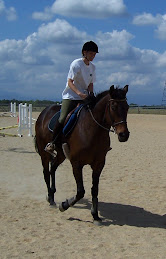Everyone’s body “idles” at its own RPM – some of us have higher Revolutions Per Minute than others, which is why weight loss has to be customized to personal needs. Trainers who pay attention to a client’s family history, habits, medical history, and dietary habits are invaluable because they focus on the biggest factor in weight loss: metabolism. One person may burn 1,400 calories per day just to exist. Another can easily burn 2,500. It’s all in the genetic, activity, and dietary details.
Metabolism, especially our Resting Metabolic Rate (RMR), is affected by a myriad of influences. To begin with, family history and genetics can provide helpful clues to an individual’s metabolic type. Perhaps obesity and diabetes are common health factors in a person’s family tree; this does not mean that person is destined to be overweight. It simply means that steps need to be taken to boost that metabolic rate effectively. Healthy habits like proper dietary choices and an interest in active sports can combat a genetically-based slow metabolism. Of course, this individual will probably not be able to boast that “I can eat all the burgers and fries that I want … I simply never gain weight.” Though we cannot change the boilerplate value of what our genetics have provided for us, we certainly can build on that value to obtain the RMR that we want. Like a motorcycle mumbling along when sitting still, the more we turn the handle and “rev it up,” the faster our engine will run.
Revving up the metabolic engine happens at both micro- and macro-levels. People who exercise regularly tend to have more mitochondria (my-to-kond-ree-ah) in their cells. Mitochondria are the powerhouses of the cell – they convert food energy into “get up and move” energy. The more we exercise, the more mitochondria we can have on our side. Drinking a cold glass of water (preferably 6-8 of them per day) will prompt the body to warm itself from the inside out. This also burns calories. Eating fiber-rich, water-dense foods like oranges, watermelon, raw leafy vegetables, celery, carrots, apples, and pears will provide a double benefit: water to help flush the system, and fiber for digestive health. It also makes the body work just a little bit harder when processing these foods. If we eat regularly, providing a steady amount of calories every 3-4 hours, our metabolism will respond by remaining elevated. We need not only to eat to survive; eating for performance, or providing quality building blocks for our bodies, is essential.
Muscles are also metabolic energy bandits. A pound of muscle burns 6 calories per day just to exist. A pound of fat only requires 2 calories per day. Weight training will build muscle mass. It will also improve bone and cardiovascular health. High-quality protein in the diet will not only help build muscle mass, it will require more energy than simple carbohydrates for the body to digest. Also, as the body ages, it loses its muscle mass by 3-5 % per decade after age 25. Weight training will help prevent this loss.
Aerobic activity is the biggest RMR-builder of all. Not only do we burn up to 800 calories per hour with high-energy activities such as running, cross-country skiing, and fast cycling, that high-burst burn will continue beyond the exercise session. The best fat-burning, metabolism-building activity is a workout that mixes both resistance training and aerobics. Boot camps, or programs that incorporate exercises such as high-speed treadmill work with power bands or weights, are the king of metabolism boosters. Combined with eating for performance, any high-energy workout program will keep your metabolic RPM spinning at high speed, and burning fat, effectively.
Thursday, June 18, 2009
Subscribe to:
Post Comments (Atom)



.jpg)




No comments:
Post a Comment